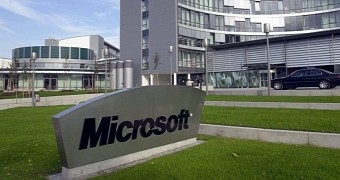Ever since Microsoft officially brought Windows 8 to life, the company had to deal with constant criticism coming from pretty much everyone out there, including analysts, experts, former employees, officials working for rival companies, but most importantly, users.
It’s no secret that Windows 8 really caused an avalanche of bad words coming towards Microsoft from its users, mostly due to the changes that the company decided to make to the operating system. Truth is, removing the Start menu and focusing so much on touch-optimized features wasn’t quite the best idea, but those responsible for this dramatic change paid with their jobs for the sudden different approach adopted by Windows.
Steven Sinofsky, who was in charge of the Windows division when Windows 8 came out, left the company approximately one month after the debut of the modern operating system, with sources claiming that the growing tension between he and Ballmer was the main cause of his departure.
But leaving Windows 8 aside, there’s no doubt that Microsoft itself admitted that it was wrong when it tried to push so many touch-oriented features to PC users. It doesn’t make sense at all, and the company seems to finally get it, partially thanks to the new leadership team that took over the helm of the software giant.
The new CEO Satya Nadella and the other fellow executives are no longer pushing Microsoft towards a devices and services world, as Steve Ballmer did, but to a mobile first, cloud first concept that’s supposed to position the company better on the long term.
At the same time, Nadella is also trying to significantly improve Microsoft’s relationship with customers, as the company is still suffering from the damages caused by the previous administration team.
During his first speech as the company's CEO, Nadella has explained that Microsoft needs to be obsessed over customers and tweak its products the way they want. Below is an excerpt from his speech:
“First, we will obsess over our customers.
Obsessing over our customers is everybody's job. I'm looking to the engineering teams to build the experiences our customers love. I'm looking to the sales and marketing organizations to showcase our unique value propositions and drive customer usage first and foremost.
In order to deliver the experiences our customers need for the mobile-first and cloud-first world, we will modernize our engineering processes to be customer-obsessed, data-driven, speed-oriented and quality-focused. We will be more effective in predicting and understanding what our customers need and more nimble in adjusting to information we get from the market.”
It’s a well-known fact that Steve Ballmer, who was Microsoft’s CEO for 13 years, wasn’t the kind of guy that accepted somebody else’s opinions. Instead, his word was law and nobody had the guts to contradict him, even though chances were that he was wrong.
Former company employees revealed that Ballmer was bringing a baseball bat in his office for meetings with executives in order to make sure that everyone accepted his ideas, although it was clearly just a matter of intimidation, and more experienced executives weren’t falling for that.
But Satya Nadella is completely different. He’s trying to listen to customers, talk to them, address their complaints, and is trying to do better in the future to avoid upsetting them. He’s a people person and that’s what Microsoft needs right now.
The very first product releases in the Nadella era seem to confirm that Microsoft is now a consumer-shaped company that’s willing to listen more and improve more.
The “based on customer feedback” tag has become the motif of every release, and Microsoft executives are saying these words with every single occasion. And truth is, features that users have been requesting for years are there, and this is clearly the right direction.
Probably the best example is the upcoming Windows 9. Little is known right now about this project, but as usual, people close to the matter provide all kinds of rumors, which, at some level, are definitely based on small bits of truth.
Windows 9 could bring back the Start menu, which is actually a way to fix what others broke down in Windows 8, but also remove the Modern UI from the desktop and thus make the operating system much more appropriate for use with a mouse and keyboard. Basically, Microsoft is building Windows 9 the way Windows 8 was expected to be from the very beginning, so it’s going to be an operating system that tackles customers’ demands better.
Multiple desktops, a feature that users have been asking for like forever, is also expected to be there in Windows 9, and we have to admit that this is clearly quite a big change for those running Windows on their workstations. In a good way. Multiple desktops can really boost productivity and it’s definitely an option that shall come in handy to the majority of users.
In the end, it’s really the time when everyone needs to stop badmouthing Microsoft and at least give them a chance. The next 12 months are going to be really critical for Redmond, with major product releases being expected, including Windows 9, a smartwatch, Office Touch for Windows 8, and others, so let’s just wait and see what happens. If Microsoft fails this time too, not even Satya Nadella can save them.

 14 DAY TRIAL //
14 DAY TRIAL //